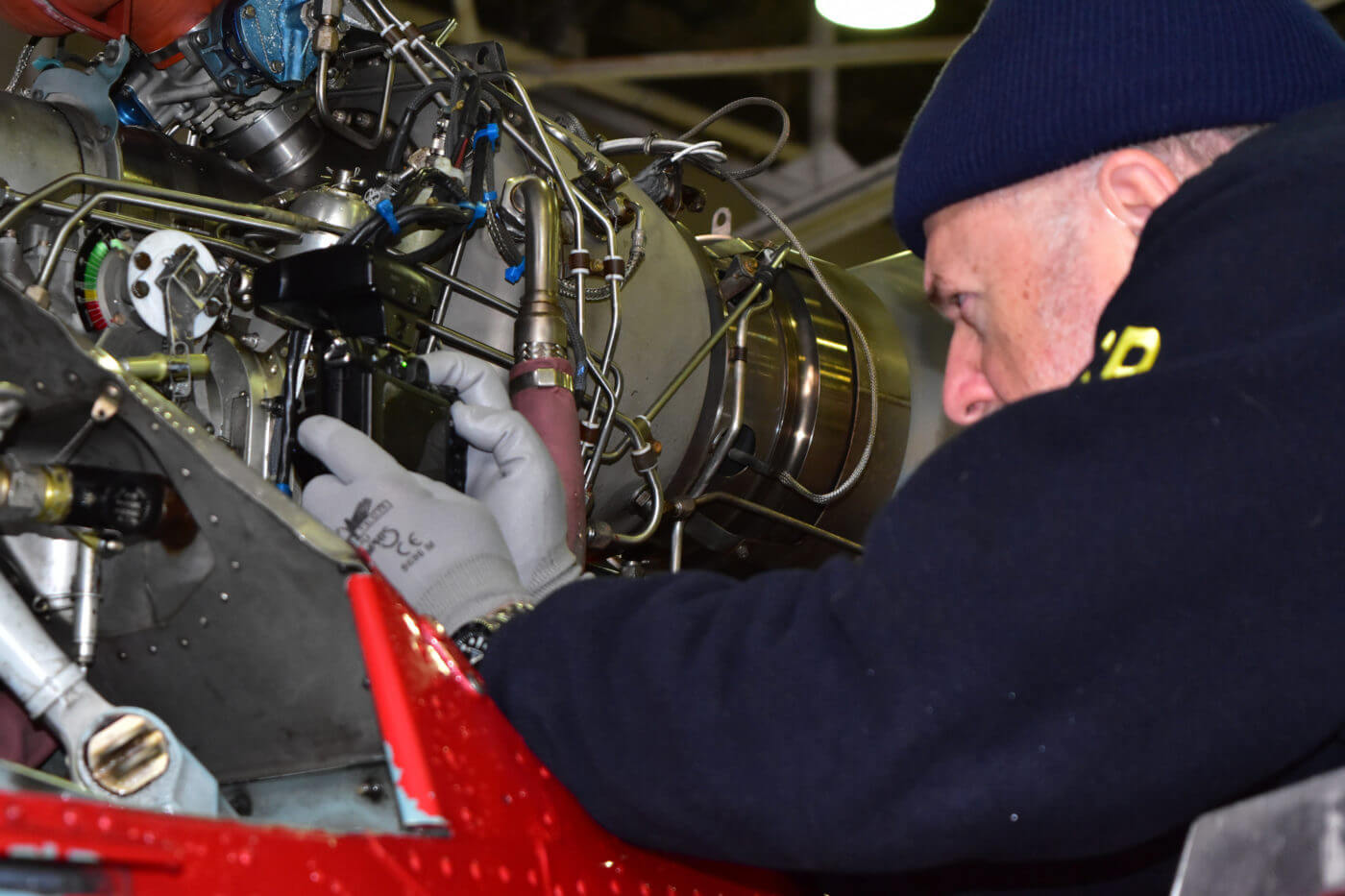The NTSB has issued its preliminary report on the March 11 crash of a Liberty Helicopters Airbus AS350 B2 helicopter in New York City’s East River.

The aircraft was being operated on behalf of FlyNYON as a doors-off helicopter photo flight when it made a forced landing to the East River, then overturned in the water. The pilot, who was wearing only the aircraft’s normal restraint system, managed to escape. The five passengers — who were wearing supplemental harnesses provided by FlyNYON — were unable to free themselves and drowned.
The NTSB’s preliminary report includes an extensive summary of the agency’s interview with the accident pilot. According to the pilot’s account, the aircraft was proceeding slowly along the eastern side of Central Park at an altitude of approximately 2,000 feet when the front seat passenger “turned sideways, slid across the double bench seat toward the pilot, leaned back, and extended his feet to take a photograph of his feet outside the helicopter.”
As the pilot initiated a right pedal turn, he observed indications of power loss and believed he had experienced an engine failure. After ruling out Central Park as a landing area because there were “too many people,” he turned toward the East River and extended his autorotative glide in an attempt to make the water.
At this point, the pilot told investigators, he attempted to restart the engine twice, with no positive indications of a successful restart on the instrumentation. When he was sure he could clear the buildings and make it to the river, he activated the floats at an altitude of about 800 feet above ground level (AGL).
The pilot was now “committed to impact,” and reached down for the emergency fuel shutoff lever. That’s when he realized that the lever was already in the off position, and a portion of the front seat passenger’s tether was underneath the lever.
As the helicopter continued to descend through 600 feet AGL, he said, he positioned the fuel shutoff lever to the on position and attempted to restart the engine. He observed positive indications on the engine instruments immediately, but realized as he descended through 300 feet that the engine “wasn’t spooling up fast enough,” and continued the autorotation.
Passing through between 100 and 50 feet, the pilot began a cyclic flare but “did not get a lot of RPM back.” The aircraft impacted the water in a five- to 10-degree nose-up attitude and quickly began listing to the right.
By the time the pilot unbuckled his restraint, he said, he was fully underwater. He managed to pull himself out through the doorframe and surfaced about four feet away from the nose of the helicopter, then crawled onto the belly of the aircraft to wave for help.
Examination of the aircraft revealed that the snapwire or “witness wire” between the fuel shutoff lever and engine control housing was broken at its lower end where it was normally secured through a hole in the control housing. The NTSB did not find evidence of pre-impact engine abnormalities.
Evaluation of the emergency float system revealed that the floats installed on the left landing gear skid appeared to be more inflated than the floats on the right skid. The emergency floats’ left pressurized gas cylinder gauge indicated zero psi, while the right gauge indicated 4,000 psi.
According to the NTSB’s report, a functional test of the float actuation system found that the trigger mechanism was smooth with no evidence of binding.
“Continuity of the float system control was established between the trigger, dual cable block, and the activation cable clevis connection,” the report states. “When the trigger was released, the dual cable block returned to its normal position (via spring within the junction box) but the upper and lower turnbuckles remained in their actuated positions.”
The complete report can be found on the NTSB’s website.









